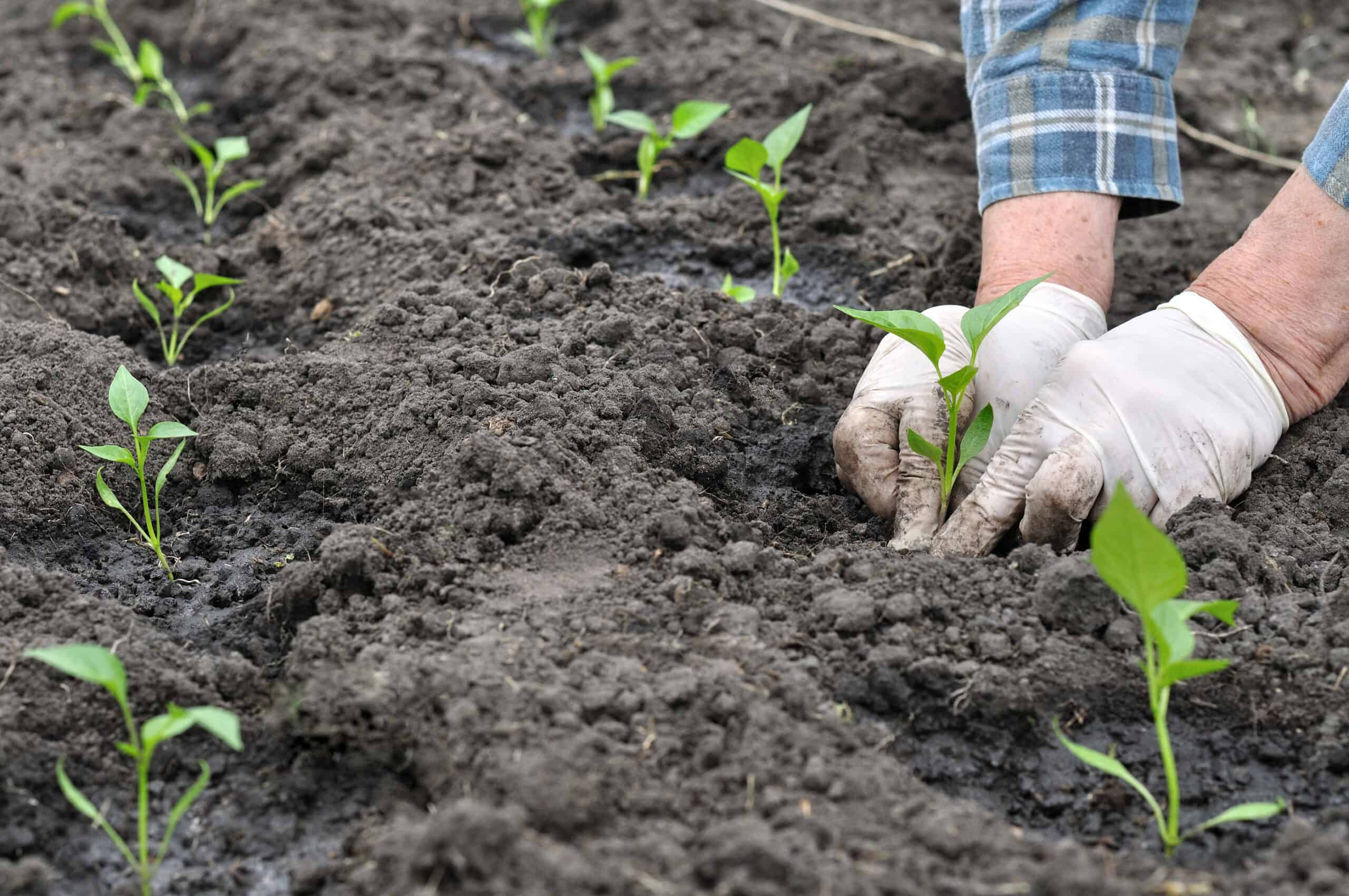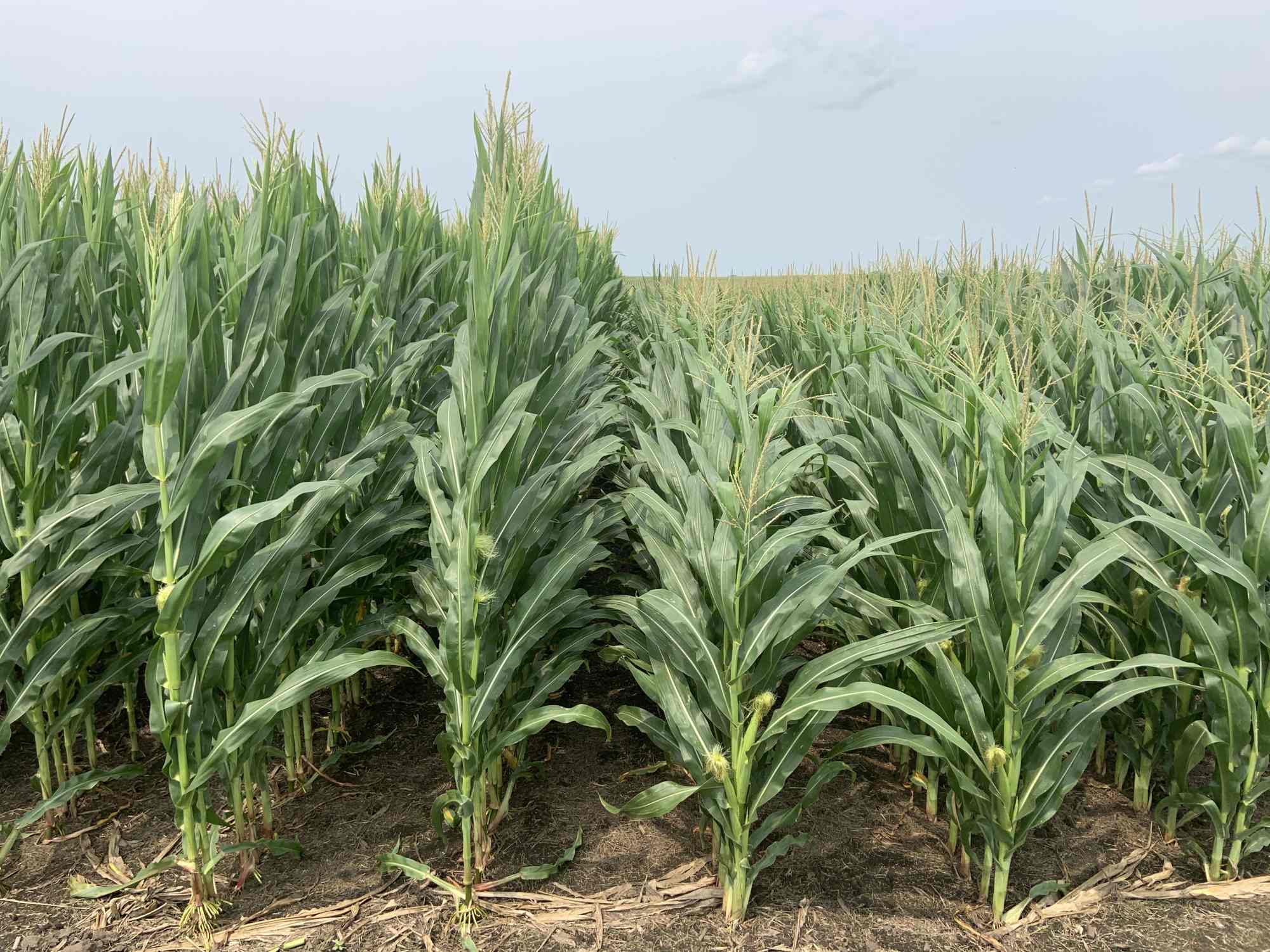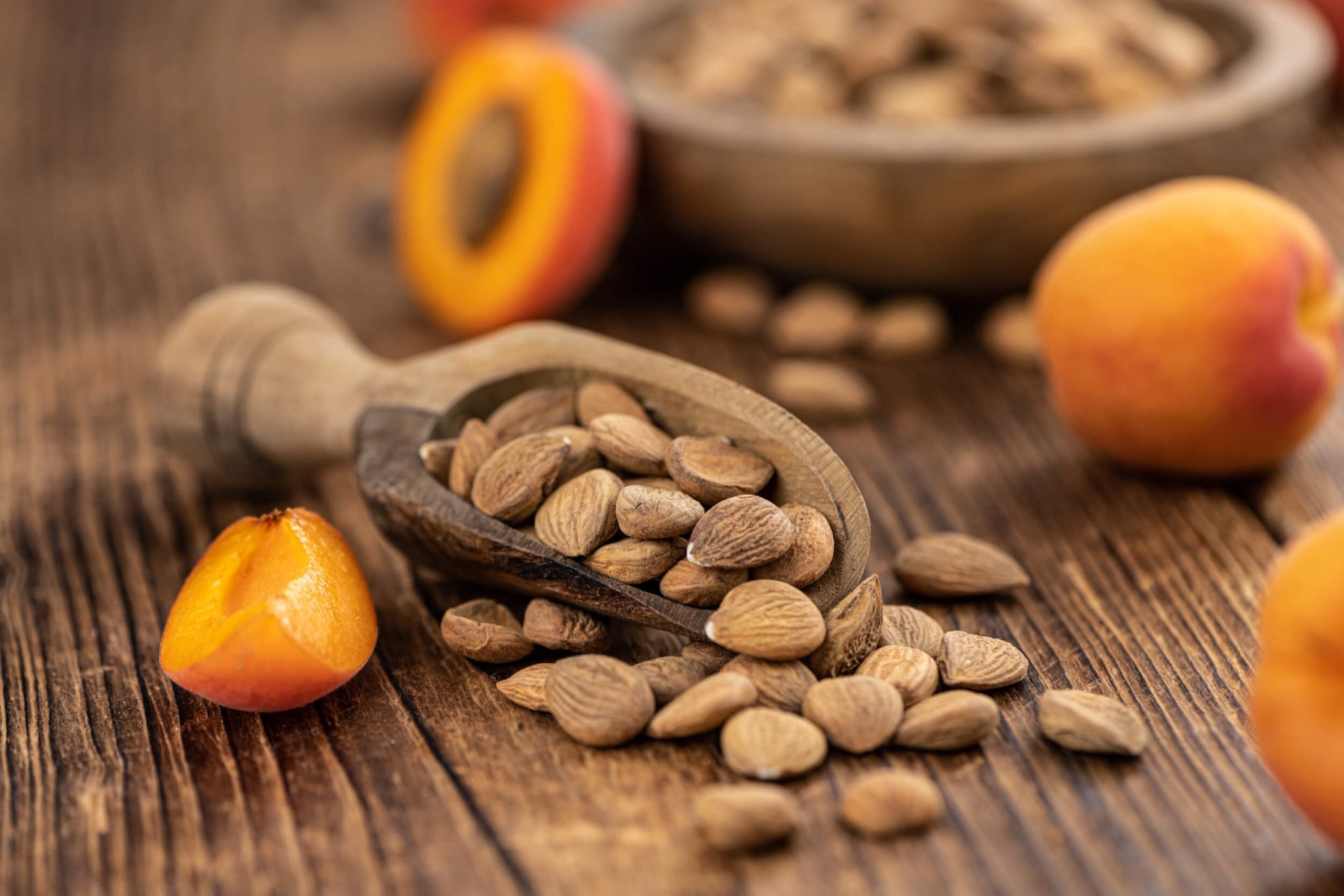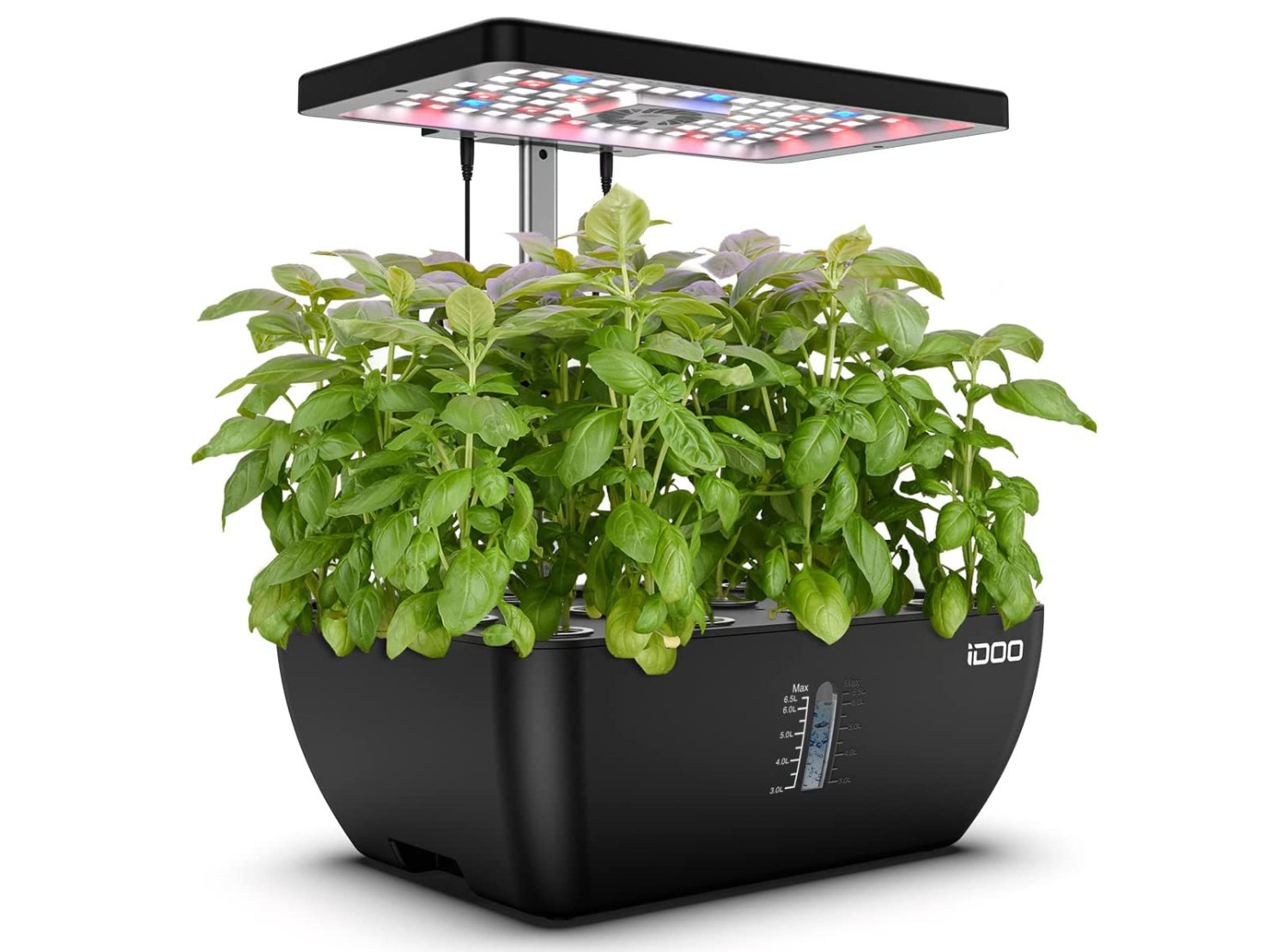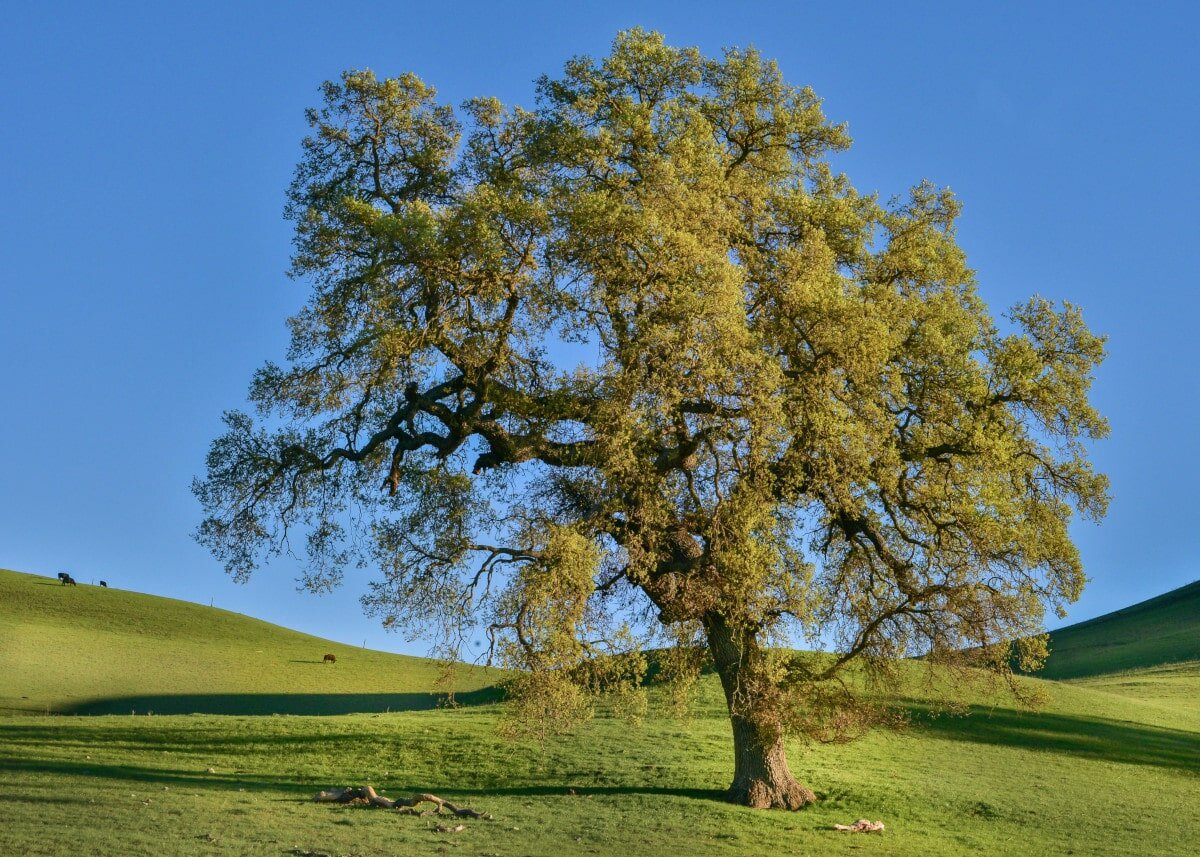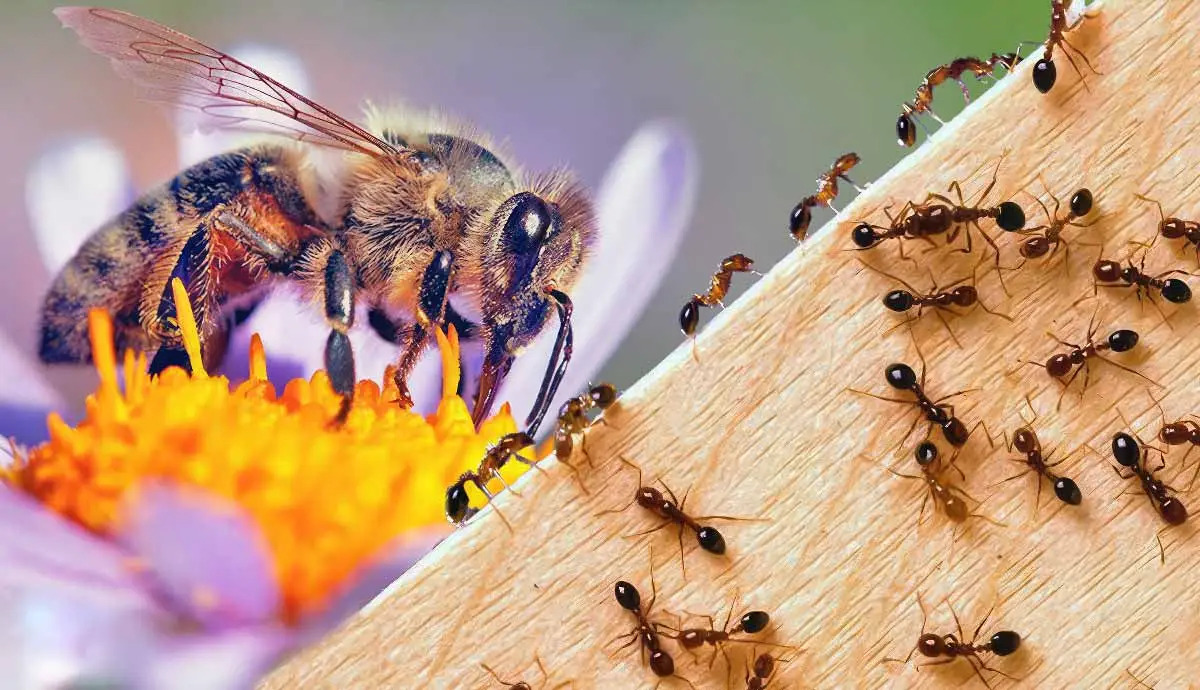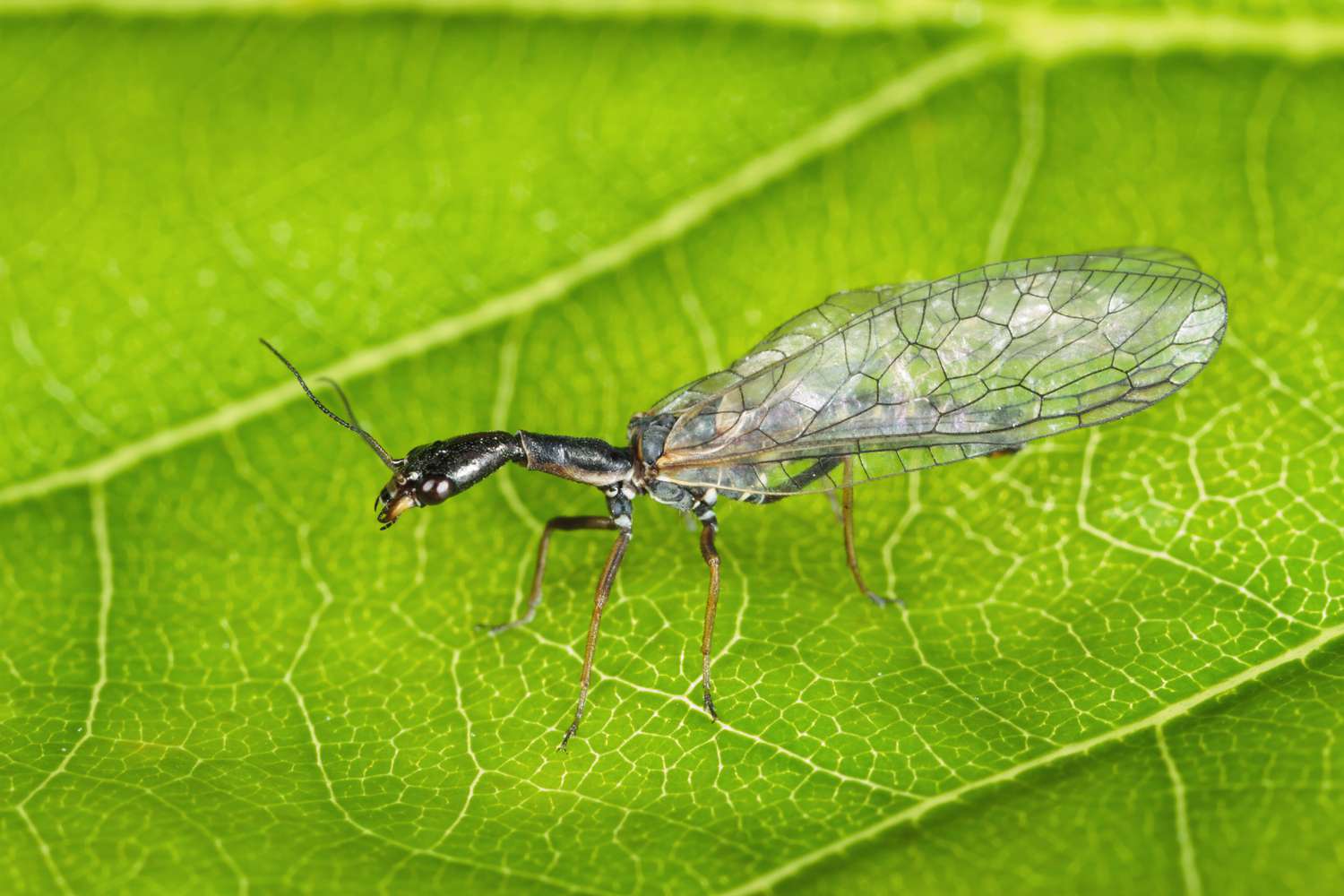Home>Types of Gardening>Edible Gardening>How Many Seeds In A Cardamom Pod
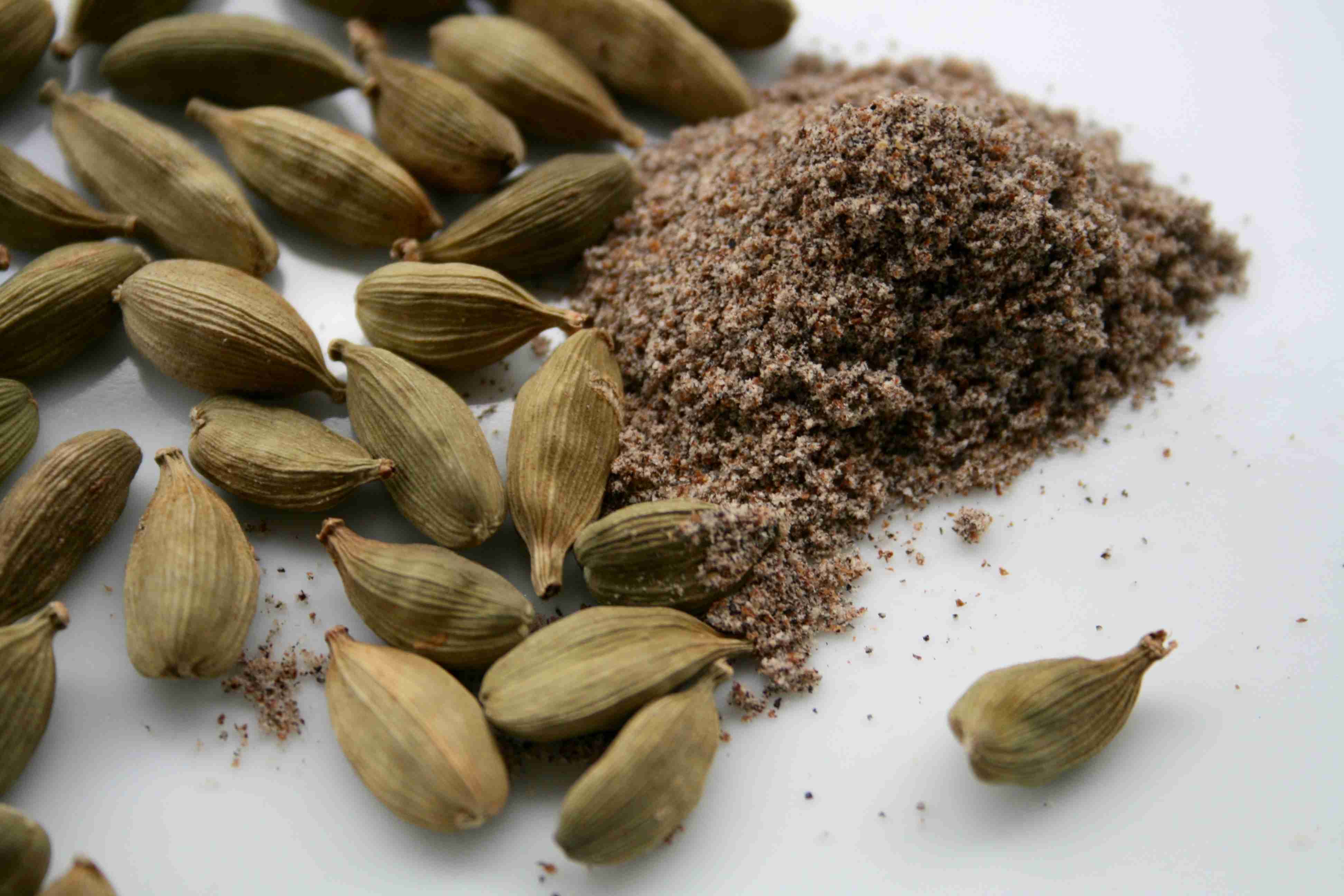

Edible Gardening
How Many Seeds In A Cardamom Pod
Published: September 16, 2023
Learn about edible gardening and find out how many seeds are typically found inside a cardamom pod. Discover the secrets of growing your own flavorful spices.
(Many of the links in this article redirect to a specific reviewed product. Your purchase of these products through affiliate links helps to generate commission for Chicagolandgardening.com, at no extra cost. Learn more)
Table of Contents
Introduction
Welcome to the fascinating world of cardamom! Whether you’re an avid food enthusiast, a culinary professional, or simply curious about exotic spices, cardamom is sure to captivate your senses. In this article, we will explore the intriguing question: how many seeds are there in a cardamom pod?
Cardamom, known as the “Queen of Spices,” is a highly prized and versatile spice that is widely used in both sweet and savory dishes. It is native to the tropical rainforests of India, Bhutan, and Nepal, but is now cultivated across various regions of the world, including Guatemala, Sri Lanka, and Tanzania.
This aromatic spice boasts a rich history dating back thousands of years, where it was highly valued for its medicinal properties and delightful flavor. Today, cardamom is a staple ingredient in many traditional cuisines, including Indian, Middle Eastern, and Scandinavian recipes.
Cardamom pods are the seed pods of the plant’s flowers, which contain the small, aromatic seeds we use in cooking. These slender green pods are harvested when they are still unripe and dried to preserve their unique flavors. They have a distinct and pleasant smell, with undertones of citrus, mint, and spice.
Now, let’s dive deeper into the anatomy of a cardamom pod and understand how they are used in various culinary preparations. Join us on this exciting journey and discover the wonders of cardamom!
What is a cardamom pod?
A cardamom pod is the fruit of the cardamom plant (scientifically known as Elettaria cardamomum), a member of the ginger family. It is a small, green, and elongated seed pod that contains the highly prized cardamom seeds. These pods have a unique shape and structure, resembling a small elongated oval or spindle.
The cardamom pod is the protective casing that houses the seeds. Its outer layer is tough and fibrous, which helps to shield the seeds from moisture, pests, and external damage. The pod’s color may vary from light green to dark green, depending on the stage of ripeness and the variety of cardamom.
When you hold a cardamom pod, you’ll notice that it has a slightly leathery texture and a pleasant aroma. When gently squeezed, the pod releases aromatic oils, adding to its allure. It is important to note that cardamom pods are typically harvested and used before they fully ripen, as this is when the seeds possess their optimal flavor and aroma.
The size of a cardamom pod can vary, but on average, it can measure between 1 to 2 centimeters in length. Each pod is divided into three distinct chambers or compartments, and each chamber contains numerous small, black seeds. These seeds are the prized culinary ingredient that gives cardamom its distinctive taste and fragrance.
Cardamom pods are easily found in specialty spice stores, online retailers, and sometimes even in your local grocery stores. They can be purchased whole or in ground form, but many culinary experts agree that the whole pods possess a superior flavor and aroma. By purchasing whole cardamom pods, you have the added advantage of being able to inspect the quality of the pod and extract the seeds as needed.
Now that we understand what a cardamom pod is and its importance as the vessel for its prized seeds, let’s explore how these pods are used in various culinary creations.
Anatomy of a cardamom pod
The anatomy of a cardamom pod is fascinating and holds the secret to its unique flavor and aroma. Let’s take a closer look at the different components that make up this extraordinary spice.
1. Outer layer: The outer layer of a cardamom pod is the first thing you encounter. It is thick, fibrous, and protects the fragile seeds inside. The outer layer is firm and slightly wrinkled, providing a durable casing that safeguards the delicate seeds from moisture, light, and air.
2. Color and appearance: Cardamom pods have a beautiful green color, ranging from pale green to a deep, vibrant shade. The color can vary depending on the variety of cardamom and the stage of ripeness. The pods are slender and elongated, with a distinctive shape that sets them apart from other spices.
3. Three chambers: The pod is divided into three chambers, each containing numerous tiny black seeds. These chambers are connected by thin membranes, creating partitions within the pod. Each chamber acts as a protective space for the seeds, preventing them from moving around or clumping together.
4. Seeds: The seeds inside a cardamom pod are the true treasure. They are small, black, and highly aromatic. These seeds are responsible for the distinctive taste and fragrance of cardamom. The number of seeds inside each pod can vary, typically ranging from 10 to 20 seeds, depending on the size and variety of the pod.
5. Fragrance: When you open a cardamom pod, you’ll be greeted with an exquisite aroma. The fragrance is a delightful blend of citrusy, minty, and spicy notes. As you crush or grind the seeds, the aroma becomes even more pronounced, releasing its full aromatic potential.
It’s important to note that while the seeds are the primary culinary ingredient, the outer layer of the cardamom pod also contributes to the overall flavor when used in cooking. However, it is common practice to remove the seeds from the pod and discard the outer layer before using cardamom in recipes.
Now that we’ve explored the anatomy of a cardamom pod, let’s discover how this spice is used in various culinary preparations and the factors that determine the number of seeds inside a pod.
How are cardamom pods used?
Cardamom pods are a versatile spice that is used in a wide range of culinary creations. The unique flavor and aroma they possess can elevate both sweet and savory dishes. Here are some popular ways cardamom pods are used in cooking:
- Infusions: One of the most common uses of cardamom pods is to infuse their flavors into liquids like water, milk, or tea. The pods are lightly crushed to release the seeds’ essential oils, and then added to the liquid for simmering. This process imparts a subtle and fragrant cardamom essence, which can be used as a base for various recipes.
- Baking and desserts: Cardamom lends an incredible flavor to baked goods and desserts. Ground cardamom or finely crushed seeds are commonly added to cookies, cakes, pastries, and even ice creams and custards. It adds a unique and sophisticated touch, infusing warmth and depth to the sweet treats.
- Curry blends and spice mixes: In Indian and Middle Eastern cuisines, cardamom is a key ingredient in various curry blends and spice mixes. The pods are often included whole or lightly crushed to infuse their flavors into the dish. Cardamom adds a distinct spiciness and a slightly floral note to the savory preparations, enhancing the overall taste profile.
- Flavoring rice and grains: Cardamom pods can be added to rice dishes, such as pilafs and biryanis, during the cooking process to impart a delicate fragrance and flavor. They can also be used to flavor other grains like quinoa or couscous, elevating their taste and turning them into aromatic side dishes.
- Beverages: Cardamom is a popular spice in many traditional beverages around the world. It is added to coffee, hot chocolate, and even alcoholic drinks like mulled wine or cocktails. Cardamom pods can be lightly crushed or tossed into the liquid while brewing to release their flavors and create a warm and inviting drink.
These are just a few examples of how cardamom pods can be used in cooking. The possibilities are endless, and the spice’s versatility enables it to enhance the flavors of a wide array of dishes.
Now that we understand the various applications of cardamom pods, let’s delve into the factors that determine the number of seeds inside a cardamom pod.
Determining the number of seeds in a cardamom pod
The number of seeds inside a cardamom pod can vary from pod to pod. While there is no set rule, it is generally observed that cardamom pods contain anywhere from 10 to 20 seeds. However, factors such as the variety of cardamom, pod size, and growing conditions can influence the seed count.
It is worth noting that the number of seeds in a cardamom pod is not directly related to the pod’s size. Larger pods may not necessarily contain more seeds than smaller ones. The seed count is primarily determined by genetic factors and the development of the plant.
Cardamom plants produce flowers that give rise to seed pods. Not all flowers on a cardamom plant reach maturity at the same time, resulting in a mix of pods at various stages of development. This is why you may find pods with different seed counts in the same batch.
Cardamom seeds are naturally nestled within three compartments or chambers inside a pod. These chambers are separated by thin membranes and hold the seeds in place. Each chamber can contain multiple seeds, ranging from a few to several, depending on the pod’s genetics and growing conditions.
To determine the number of seeds in a cardamom pod, you can gently open the pod by applying light pressure. Carefully separate the chambers and count the seeds inside. This method may require a bit of patience and precision, as the seeds can be tiny and may stick together.
While whole cardamom pods are commonly used in recipes, you can also purchase cardamom seeds or ground cardamom for convenience. However, it’s worth noting that whole pods tend to have a longer shelf life and retain their flavor better than pre-ground seeds.
Ultimately, the number of seeds in a cardamom pod may vary, but the flavor and aroma they provide remain consistent. Whether your cardamom pod contains 10 or 20 seeds, you can be assured of the delightful and enticing culinary experience it will bring to your dishes.
Now that we’ve explored the factors that determine the number of seeds in a cardamom pod, let’s address some common misconceptions about this intriguing spice.
Factors that affect the number of seeds in a cardamom pod
Several factors can influence the number of seeds found inside a cardamom pod. Understanding these factors can shed light on the variations in seed counts and provide insights into the growth and development of this fascinating spice.
1. Variety of cardamom: There are different varieties of cardamom, such as green cardamom (Elettaria cardamomum) and black cardamom (Amomum subulatum). Each variety may have its unique characteristics, including differences in pod size and seed count. While green cardamom pods tend to have a higher seed count, black cardamom pods usually contain fewer seeds.
2. Growing conditions: Cardamom plants thrive in tropical and subtropical regions, where they require specific environmental conditions to flourish. Factors such as temperature, humidity, rainfall, and soil composition can impact the growth of the plant and subsequently affect the development of the seeds inside the pods. Optimal growing conditions can lead to healthier plants and potentially higher seed counts.
3. Plant genetics: Genetics play a significant role in determining the characteristics of cardamom pods, including the seed count. Different cultivars have specific traits inherited from their parent plants, which can influence variations in seed numbers. Plant breeders and growers work on developing cultivars with desirable attributes, including pod size and seed count, to meet market demands.
4. Maturity of the pod: Cardamom pods are harvested when they reach the appropriate level of maturity, just before they fully ripen. The stage at which the pod is picked can affect the number of seeds it contains. Pods harvested at an earlier stage may have fewer seeds that are still developing, while pods that are left to fully mature may have more fully-formed seeds.
5. Agricultural practices: Farming techniques, such as the use of fertilizers, irrigation, and pest control methods, can influence the growth and development of cardamom plants. Proper agricultural practices ensure optimal plant health, which in turn can contribute to a higher seed count in the pods.
It’s important to remember that while the number of seeds can vary, the quality and flavor of cardamom are not solely determined by the seed count. The aroma, taste, and overall culinary experience offered by cardamom remain consistent regardless of the seed count in a pod.
Now that we have explored the factors that can impact the number of seeds in a cardamom pod, let’s address some common misconceptions about cardamom and its seed count.
Common misconceptions about the number of seeds in a cardamom pod
Cardamom, with its unique flavor and aroma, often sparks curiosity and leads to misconceptions about the number of seeds found inside its pods. Let’s dispel some common misconceptions and provide clarity on this topic:
1. Larger pods contain more seeds: Contrary to popular belief, the size of a cardamom pod does not necessarily determine the number of seeds it holds. While larger pods may appear to contain more seeds, the actual seed count can vary regardless of the pod’s size. Factors such as genetics and growing conditions play a more significant role than the physical size of the pod.
2. Pod color indicates seed count: The color of a cardamom pod, whether it is light green or darker green, does not provide any indication of the number of seeds inside. Color variation can occur due to factors like cultivar, ripeness, or processing methods, but it does not directly correlate with the number of seeds in the pod.
3. All pods from the same plant have the same seed count: In reality, cardamom plants produce flowers at different stages of development, resulting in pods at different levels of maturity. This means that pods from the same plant can have varying seed counts. The number of seeds is influenced by factors such as the flower’s position on the plant and the timing of its maturation.
4. Higher seed count indicates better quality: The number of seeds inside a cardamom pod does not necessarily determine its quality. Both pods with fewer seeds and those with a higher seed count can possess excellent flavor and aroma. The quality of cardamom is determined by factors such as freshness, aroma, taste, and overall integrity of the spice, not solely the seed count.
5. Seed count affects the flavor and aroma: The flavor and aroma of cardamom come from the essential oils present in the seeds, not the number of seeds itself. Whether a pod contains 10 or 20 seeds, the intensity and character of the cardamom’s flavor and aroma remain consistent. It is the essential oils that lend the unique taste and fragrance to dishes, regardless of the seed count.
Understanding these misconceptions helps us appreciate the complexities and variations in cardamom pods. It emphasizes the importance of considering other factors, such as freshness, pod quality, and overall sensory experience, when selecting and using cardamom in culinary creations.
Now that we’ve addressed these common misconceptions, let’s wrap up our exploration of cardamom pods and their fascinating attributes.
Conclusion
In conclusion, cardamom pods are a truly extraordinary spice that adds a distinct flavor and aroma to a wide range of dishes. The pods themselves are the protective casings that house the prized cardamom seeds. These slender green pods, with their unique shape and structure, are a testament to the beauty and complexity of nature.
Cardamom pods can contain varying numbers of seeds, typically ranging from 10 to 20. However, the seed count is influenced by factors such as the variety of cardamom, growing conditions, pod maturity, genetics, and agricultural practices. It’s important to note that the number of seeds does not necessarily indicate the quality or flavor of the spice.
The culinary applications of cardamom pods are vast. They are used to infuse flavors into liquids, flavor desserts and baked goods, enhance curries and spice blends, add fragrance to rice and grains, and elevate beverages. The versatility of cardamom makes it a beloved ingredient in many cuisines around the world.
With its intoxicating aroma and delicate flavor, cardamom brings a touch of luxury to any dish. Whether you’re experimenting with a new recipe or adding a dash of cardamom to a familiar favorite, this spice has the power to transform ordinary dishes into extraordinary culinary experiences.
Now armed with a deeper understanding of cardamom pods, their anatomy, uses, and the factors that influence the number of seeds, you can embark on your culinary adventures with this remarkable spice. Enjoy exploring the delightful world of cardamom and savor the sensory delights it has to offer!

